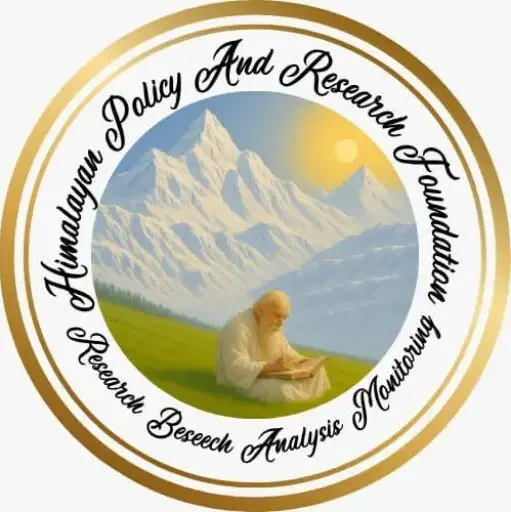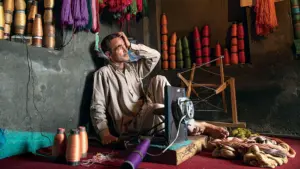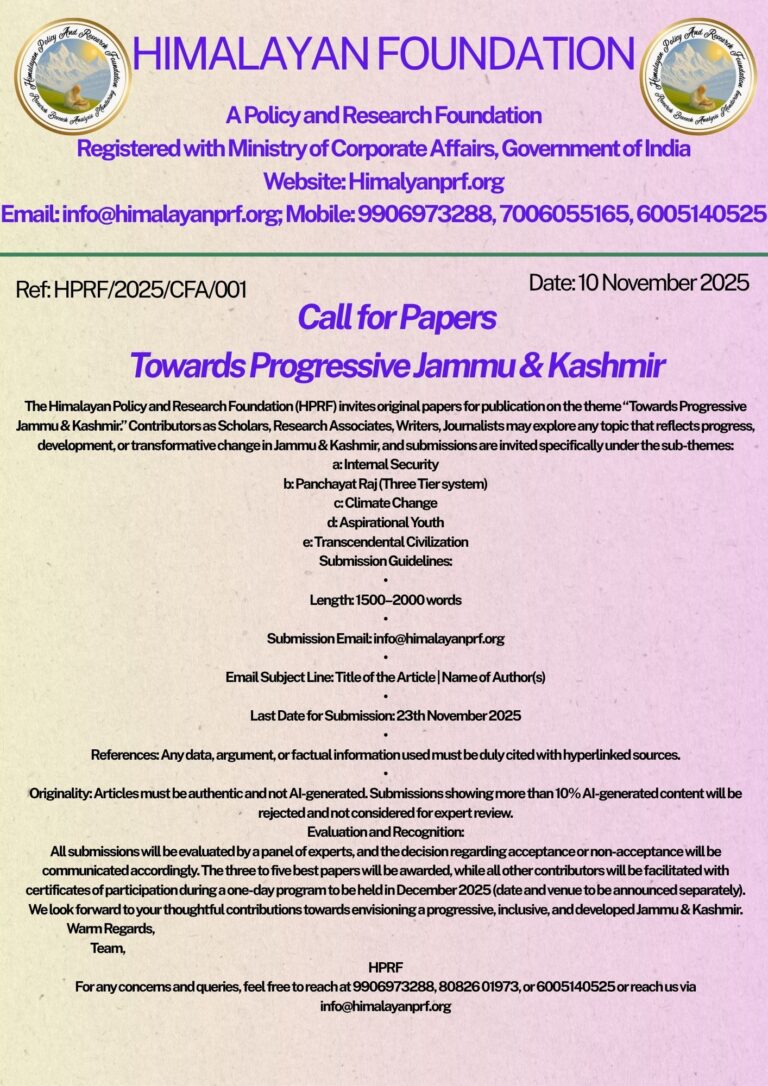Written By: Dr. Peerzada Muneer
The idea of the examination did not originate in classrooms but as a system of selecting and certifying individuals for important roles. One of the earliest and most influential models was the Chinese imperial examination (keju), institutionalized under the Sui and Tang dynasties and later expanded during the Song, where mastery of Confucian classics determined entry into the bureaucracy. This system created a meritocratic ideal that deeply shaped administrative structures and later inspired examination practices worldwide (MeritTrac; Nord Anglia Education).
In South Asia, examinations took different forms. Knowledge was often tested orally through debates, discussions, and teacher-disciple assessments in institutions such as gurukuls and religious schools. These practices emphasized memory, reasoning, and personal interaction rather than written records. With the arrival of colonial rule, however, British administrators introduced European-style written examinations to India, transforming local traditions into standardized, bureaucratically useful forms of assessment that aligned with colonial governance (Step Up Academy; Moonpreneur).
Medieval Europe developed its own practices, where universities relied on oral disputations, public defenses, and viva voce examinations as markers of intellectual maturity. Over time, as education systems expanded, written examinations became increasingly important. By the eighteenth and nineteenth centuries, when modern nation-states sought scalable methods of assessment, written tests became the dominant mode. They allowed large numbers of students to be assessed in uniform ways, fulfilling the dual functions of selection and certification, while also reinforcing centralized control over curricula and educational standards (Teachers Institute; College Search).
The industrial age consolidated these trends. The growing need for efficiency and objectivity led to the spread of timed examinations, written formats, and eventually machine-graded multiple-choice tests. These methods were celebrated for their reproducibility and fairness but also became tools of social sorting, determining access to limited educational and professional opportunities. In this sense, examinations promised meritocracy while also acting as gatekeepers, structuring who could rise in society (Sunstone; Chegg India).
At the same time, critiques emerged. Philosophers and educators argued that examinations narrowed education to rote memorization and test-taking skills, ignoring creativity, collaboration, and deeper understanding. This debate continues to resonate today, with some noting that an excessive focus on exams misses the larger purpose of education itself (Philosophy Unleashed). The COVID-19 pandemic intensified such questions, as traditional high-stakes exams were disrupted, and institutions turned to teacher assessments, portfolios, and digital alternatives. These experiments demonstrated both the fragility and adaptability of examination systems (JAMA; Teachers Institute).
Today, examinations are no longer confined to one model but exist as a plural set of practices, ranging from oral to written, practical to digital, continuous to high-stakes. Technological innovation has introduced online proctoring, adaptive testing, and AI-driven assessments, while pedagogical reform movements emphasize authentic evaluation that mirrors real-world skills. Yet the core dilemma remains the same as it was centuries ago: how to balance fairness, reliability, and efficiency with the need to capture the rich, creative, and collaborative dimensions of human learning. The evolution of examinations, from imperial bureaucracy to global education systems, reveals both their enduring indispensability and the constant debates about how best to reimagine them for the future.
Doing away with the traditional system of learning and evaluation, India’s encounter with the modern concept of examinations began with Britishers importing their examination model to staff its bureaucracy and reshape education, making written examinations the new norm.
After independence, India began the process of domesticating and reforming this inherited model. The Radha Krishnan Commission (1948–49) criticized rote-based testing and recommended assessments that measured reasoning and application. The Mudaliar Commission (1952–53) emphasized continuous internal evaluation alongside external exams, and later policy discussions reiterated the need to shift the balance from memorization to understanding. This trajectory reflects India’s effort to adapt the examination idea to its vast and diverse educational context (ClearIAS).
By the latter half of the twentieth century, universities and school boards introduced innovations such as semester systems, internal assessment, grading in place of marks, and decentralized evaluation practices. Yet many reforms were unevenly implemented, constrained by resources, cultural attachment to high-stakes exams, and the logistical challenges of mass education. Scholars note that despite the intent to modernize, examinations remained heavily burdened by rote learning and standardization, limiting their ability to nurture critical thinking and creativity (ShodhSagar).
An Attempt at Shifting the Gears
In the twenty-first century, India’s approach has entered a new phase, marked by large-scale policy initiatives and technological integration. The National Education Policy (NEP 2020) explicitly reimagines assessment as competency-based, holistic, and formative, calling for reduced reliance on summative board exams and greater emphasis on projects, portfolios, and multiple modes of evaluation. The establishment of PARAKH (Performance Assessment, Review, and Analysis of Knowledge for Holistic Development), a national assessment body, is intended to ensure fairness and equivalence across boards while pushing for assessments that measure skills and application rather than memory work (Education for All in India).
School education has also seen reforms in board examinations, with shifts toward analytical questioning, reduced content load, and multiple exam sessions to relieve student pressure. Experiments with continuous comprehensive evaluation and competency-linked assessments reflect efforts to align exams with holistic growth. At the same time, new approaches such as digital platforms, adaptive testing, and blended learning models are reshaping classroom evaluation, especially in private schools and innovative institutions (Varthana).
Higher education has followed a similar trajectory. Universities are increasingly adopting internal evaluation, continuous assessment, and project-based grading, though challenges remain in scaling these reforms across a system marked by large enrollments and diverse capacities. Commentators argue that a fundamental cultural shift is needed to move beyond memory-based exams toward methods that genuinely assess skills, critical thinking, and innovation (Epravesh).
At the same time, credibility and governance of examinations have become pressing issues. The recent Public Examinations (Prevention of Unfair Means) Act was introduced to curb malpractice and safeguard the integrity of competitive exams, while initiatives like the National Academic Depository aim to digitize and authenticate certificates. These measures reflect how deeply examinations are integrated into India’s social and economic life, and how their reliability is central to public trust.
Indian knowledge traditions are also being re-engaged in this process. Educational thinkers stress that indigenous systems emphasized dialogue, reasoning, and holistic growth, and suggest that future reforms should draw on these roots to create models that are both modern and culturally resonant (India Today). In this sense, India has not simply received examinations but has continuously amended and integrated them, blending colonial inheritances with indigenous insights and global innovations.
The evolution of examinations in India thus tells a layered story: from colonial imposition to independent reform, from high-stakes uniformity to diversified and technology-driven approaches, and from rote-based testing to aspirations for authentic assessment. While challenges remain, the direction is clear: an ongoing attempt to reconcile efficiency and fairness with the broader educational goal of fostering creativity, competence, and innovation (Teachers Institute).
Examinations, in their conventional high-stakes form, are deeply flawed both philosophically and pragmatically. Philosophically, they presuppose a narrow theory of knowledge and learning: that mastery is best captured by a timed, individual performance over paper, often under stress. But human understanding is rarely instantaneous, decontextualized, or isolated. Real learning is distributed, dialogic, iterative, and often collaborative. Education is not merely the ability to recall but the ability to apply, critique, synthesize, and create. The critique that “an emphasis on exams misses the point of education” calls into question whether the exam itself distorts the ends of schooling as argued in The Unexamined Life is Worth Living.
On the practical side, conventional exams generate perverse incentives. Teachers may teach to the test; students may memorize formulaic responses rather than understand concepts. High-pressure environments induce anxiety, performance failure for otherwise capable learners, and exclusion of those whose strengths lie outside the tested format. Over decades, power has accrued to coaching industries, entrance exam drill factories, and shadow economies, which further amplify inequality. In India, the phenomenon of the “marks race” and grade inflation testify to how the pursuit of numeric scores can detach from real learning, as seen in reports like Where Grade Inflation Met Quality Deflation.
Even from a psychometric perspective, many summative exam systems struggle with validity (are they measuring the right skills?) and reliability (do scores consistently reflect ability across contexts?). They are weak at assessing complex problem-solving, creativity, ethical judgment, socio-emotional skills, or collaboration. To correct for this, educational research emphasizes formative assessment, continuous evaluation, portfolios, peer review, project work, and other diversified methods, discussed in works like Traditional Assessment vs Alternative Assessment and The Evolution of Assessment Methods in Modern Education. These richer assessment forms better mirror how knowledge is used in real settings.
Globally, the exam system’s rigidity became painfully visible during the COVID-19 crisis. Systems built entirely around centrally proctored summative exams buckled when physical gathering was impossible; many institutions scrambled to adopt remote, flexible assessments, revealing that the assumed “only way” was not the only way. The sudden shift catalyzed critical rethinking of exam design, as highlighted in JAMA’s reflections on examinations.
Turning to India, these philosophical and practical faults are amplified by structural constraints, inequality, entrenched bureaucracy, and high stakes competitiveness. One chronic problem is malpractice and corruption. Recurrent exam leaks, cheating mafias, and paper forgery scandals have eroded public trust. The 2024 NEET controversy, involving alleged paper leaks and anomalous top scores, sparked protests and legal challenges. The Vyapam scam in Madhya Pradesh and controversies around the SSC highlight how corruption corrodes the legitimacy of assessments. Legislative responses such as the Public Examinations (Prevention of Unfair Means) Act, 2024 criminalize unfair practices, but enforcement remains uneven.
Another persistent issue is inequity of access. Many students in rural or economically marginalized settings lack access to well-resourced schools, experienced teachers, or digital infrastructure, putting them at a disadvantage in exams designed around speed and recall. Unequal access complicates reforms. For learners with disabilities, concerns about accessibility in computer-based testing remain significant.
Exams also produce severe psychological stress. The intense competitive culture has led to widespread anxiety and, tragically, suicides. Accounts like The Dark Side of India’s Education System and The Great Indian Marks Race detail how systemic pressures distort childhood and adolescence. Each examination season becomes a make-or-break moment, reducing education to survival contests rather than personal growth.
Why, then, does India cling to orthodox systems? Partly due to institutional inertia, but also because exams serve as a seemingly objective, administratively efficient tool for sorting millions of students. Commentators in The Great Indian Exam Debacle argue that despite recognition of flaws, reforms falter due to scale, diversity, and political disincentives.
Nevertheless, there are attempts at change. The National Education Policy 2020 positions assessment reform centrally, advocating competency-based approaches, projects, and holistic assessments. It envisions PARAKH as a national assessment centre to monitor equivalence across boards. Commentaries like Evolving Trends in Indian Examinations and Why We Need to Move Towards Holistic Assessments highlight how these reforms aspire to move beyond rote-based models. Still, critiques such as NEP Centralises Education and The Issues and Challenges of NEP question whether ideals match capacity.
Teachers’ readiness is another stumbling block. Surveys of educators, like Perceptions of NEP 2020 Implementation, show many lack training to adopt continuous assessment meaningfully. As Flaws of Traditional Exams notes, entrenched cultures resist change, often reducing reforms to cosmetic tweaks.
Grade inflation and the fetishization of high percentages deepen the malaise. Commentaries like The Annual Accusation of Board Exam Mark Inflation, Grades Inflation Destroying K-12 Education, and Will Craze for High Percentage Ruin India’s Kids? show how exam obsession has warped both assessment validity and student well-being. Public figures too, like Sanjeev Sanyal, argue that UPSC Exams Waste Young Indians’ Time, pointing to systemic inefficiencies.
At the same time, India’s rich intellectual traditions offer resources for rethinking. Accounts like The Vedic Examination Process and Indian Knowledge Systems Powering Innovation remind us that earlier models valued debate, reflection, and applied knowledge rather than rote recall. Contemporary voices, such as Innovations in Assessment and Demands for New Approaches, call for tapping into these legacies while adopting global best practices.
Ultimately, the challenge is twofold: to dismantle outdated, high-stakes mechanisms that distort learning, and to replace them with systems that are holistic, inclusive, credible, and equitable. As Rising Above the Grades suggests, only then can assessments align with education’s real purpose, cultivating wisdom, creativity, and human flourishing.
Examinations and Mental Health Crisis
Examinations have long been a defining feature of education in India, shaping not only learning but also the lives and futures of millions of students. Yet beneath this structure lies a deep mental-health crisis that is visible in rising stress levels, clinical disorders, peer pressure, financial burdens, family conflicts, and, tragically, suicides. Across India, a growing body of research, official data, and journalistic documentation shows that exams are more than academic hurdles: they have become powerful stressors that push young people into depression, anxiety, and hopelessness. A systematic review of adolescent mental health demonstrates that exam stress is among the most common causes of psychological distress among Indian students, directly linked to depressive symptoms, suicidal ideation, and even completed suicides PMC: Systematic review on student mental health.
The data are stark. Reports suggest that in 2023 alone, nearly 13,892 students in India died by suicide, many due to exam and study-related pressures, a figure that highlights both the severity of the crisis and the inadequacy of the country’s mental-health infrastructure India Today: 13,892 student suicides in 2023. Global news outlets have repeatedly described exam stress as a “suicide epidemic” in India, driven by parental expectations, intense competition, and systemic flaws in education DW: Exam pressure fuels student suicides. The Supreme Court itself has called attention to the alarming rise in such cases, acknowledging that academic competition is destroying the lives of many young people Article-14: Pressure to succeed and suicide epidemic.
Peer-reviewed studies add further detail. A comparative analysis of aspirants preparing for IIT-JEE and NEET shows that these highly competitive exams are associated with extremely high levels of stress, financial strain, and social isolation, creating a perfect storm for psychological breakdowns Cureus: Suicide trends among IIT-JEE and NEET aspirants. This aligns with research in BMC Psychiatry showing that adolescents under academic stress display higher rates of depression and suicidal ideation than their peers BMC Psychiatry on adolescent mental health. Studies on exam-related anxiety also point to associated problems such as insomnia, eating disorders, and substance abuse, all of which worsen vulnerability ScienceDirect: Depression and exam stress.
The problem is not limited to competitive exams; even board examinations, which determine future streams and college admissions, carry extraordinary weight. Every year, newspapers carry tragic stories of teenagers who end their lives because of fear of poor performance or actual failure, such as the widely reported suicide of an 18-year-old in Delhi during board exams New Indian Express: Board exam student suicide in Delhi. In Odisha earlier this year, another Class XII student ended their life under exam pressure New Indian Express: Odisha Class XII student suicide. Such cases are not aberrations but symptoms of systemic flaws, as confirmed by government records and parliamentary submissions that list exam pressure as one of the most common causes of youth suicides in India Sansad Annex on student suicides.
Underlying these tragedies are broader social pressures. Peer competition is fierce in a country with limited higher education seats relative to population, where students are forced into a “marks race” that often destroys self-esteem and friendships Times of India: The great Indian marks race. Families invest heavily in coaching centres, sometimes beyond their means, and aspirants from modest backgrounds experience guilt and despair if they fail. Reports from India Today and Rediff document how the craze for high percentages and top ranks has ruined the mental health of countless children, pushing some into irreversible decisions India Today: Board exams and grade deflation and Rediff: Craze for high marks ruining students.
Domestic issues intensify the crisis. Many students live under authoritarian parental expectations that equate self-worth with marks, while others face neglect, violence, or economic distress at home. Studies show that such environments magnify the effect of exam stress on mental health IJNRD: Adolescent suicide causes. Financial strain is equally damaging. Families who borrow to fund coaching in hubs like Kota often put unbearable pressure on their children to succeed, and the fear of letting them down becomes overwhelming. Local case reports, such as the suicide of a NEET aspirant in Bilaspur, highlight the deep economic and emotional stakes tied to exams India Today: NEET aspirant suicide investigation.
The town of Kota in Rajasthan has become symbolic of this crisis. Home to India’s largest coaching industry, it has seen dozens of suicides annually by students preparing for NEET or JEE. Experts cite isolation, long hours of study, relentless competition, and fear of failure as key triggers DW: What is behind the rise in student suicides. Families from across India, including Jammu and Kashmir, send children here, and news reports frequently document students from Kashmir dying by suicide in Kota lodgings under immense exam pressure NDTV: Kota suicide of J&K aspirant.
In Jammu and Kashmir itself, the problem has an additional layer of complexity. The region already suffers from high suicide rates due to decades of conflict, economic precarity, and social upheaval, factors acknowledged by the National Human Rights Commission NHRC: High suicide rate in Kashmir Valley alarming. Academic stress compounds this fragile situation. Research on Kashmiri youth shows that exam failure, humiliation, and parental pressure are among the strongest factors driving suicides ResearchGate: Factors influencing youth suicide in Kashmir. Local media has reported cases ranging from schoolchildren to university students taking their lives after academic setbacks or accusations of cheating Greater Kashmir: Class 8 student ends life and Kashmir Life: Student dies after cheating accusation. Reports also highlight the tragic case of teenagers jumping into rivers or ending lives in hostels, showing how exam-linked despair often intersects with other social and psychological burdens India TV News: Teen suicide in Kashmir and Times of India: Engineering student from J&K ends life.
Thus, the landscape across India, and particularly in Kashmir, is one where examinations have morphed from evaluative exercises into existential threats. What should have been tools to measure knowledge and ability have become life-or-death events in the minds of many young people. The medical and social data underscore how exam stress manifests as clinical depression, anxiety disorders, eating and sleep disturbances, and ultimately suicides. The social data show how peer competition, financial strain, and family expectations converge to create unbearable pressures. And the regional data from Jammu and Kashmir show how fragile contexts magnify these risks. Together, these findings demand urgent reforms in assessment systems, the expansion of mental-health support in schools and universities, targeted trauma-informed interventions in vulnerable regions, and a nationwide shift away from high-stakes exams as the sole markers of success. Without such systemic change, India’s students will continue to pay with their lives for a system that was designed to test knowledge but has evolved into a machinery of crushing psychological burden.
Conclusion
Examinations, as traced throughout the discussion above, have journeyed from being tools of bureaucratic control introduced during colonial times to becoming deeply embedded mechanisms of evaluating knowledge, ability, and selection in independent India. While traditional Indian systems valued oral debates, reasoning, and holistic teacher–disciple interactions, the British model of competitive written tests reshaped learning into something far more rigid and uniform. Over the decades, India has sought to adapt and reform this model through commissions, policy debates, continuous assessment models, digital innovations, and most recently the NEP 2020. Yet, much of the culture around examinations remains tied to rote learning, memory tests, and high-stakes competition. This has created both philosophical and pragmatic concerns, where examinations that should guide learning and improvement have instead become a rat race for marks, ranks, and social validation, often leading to severe psychological strain, family tensions, and in some tragic cases, student suicides.
Given these concerns, it is vital to move toward more humane and student-centered policies. Policymakers must reimagine assessment structures in line with global best practices, focusing on competency-based evaluation, flexibility in testing formats, open-book and project-based examinations, and diversified metrics that value creativity and problem-solving alongside academic knowledge. Regulatory attention must also focus on reducing the dominance of single high-stakes examinations that determine entire futures, while simultaneously addressing malpractice through transparent systems like the Public Examinations Act and digital repositories. Teacher training should integrate assessment literacy, equipping educators to deploy innovative, supportive, and psychologically sensitive evaluation practices. Above all, policy frameworks must prioritize the mental health of students by ensuring the presence of counselors, helplines, and safe spaces for expression in schools and colleges.
Yet, policy alone cannot change entrenched mindsets. The broader role of teachers, parents, peers, and elders in civil society is crucial in redefining the purpose of examinations. Teachers must cultivate classrooms where exams are treated as diagnostic tools to identify gaps and refine understanding, not as weapons of fear. Parents must check their own aspirations and resist the urge to impose unfulfilled ambitions or social class anxieties on their children, instead nurturing their passions, strengths, and weaknesses. Peers should encourage one another toward growth rather than unhealthy comparisons. Elders, community leaders, and civil society figures, whether speaking in homes, public gatherings, or from religious and social pulpits, carry the responsibility of using their influence to emphasize that education is a path to personal development and societal contribution, not a competitive battlefield.
Stress among students, therefore, is a common and almost inevitable phenomenon in such a competitive academic environment. Yet, overcoming this phenomenon is not merely a psychological necessity, it is an art that requires awareness, balance, and self-discipline. The key lies in understanding that stress management is not an ordeal but a practice that can be easily integrated into daily life. Simple relaxation techniques such as deep breathing, mindfulness meditation, yoga, and regular physical activity can significantly reduce anxiety and improve concentration. Maintaining a balanced diet, ensuring adequate sleep, and engaging in creative hobbies such as painting, writing, gardening, or playing music also contribute to emotional stability and mental rejuvenation. Interaction with nature, listening to soothing music, or spending time with friends and family can help re-channel negative energy into positive motivation.
The process of stress management becomes more effective when viewed through the “Three Cs” framework: Commitment, Control, and Challenge. Commitment encourages students to stay engaged and find meaning in their academic pursuits; Control helps them recognize what is within their power to change; and Challenge transforms stressful situations into opportunities for personal growth. When practiced together, these principles nurture resilience, foster self-care, and ultimately help students transform examinations from a source of anxiety into a platform for self-expression and achievement.
This call becomes especially urgent in Kashmir, where board examinations are only weeks away. Here, teachers and community elders must actively reassure students that exams are not the end of the road but checkpoints that help illuminate areas of improvement. Civil society must work collectively to ease anxieties, shift conversations from marks to learning, and normalize the idea that failure is not fatal but an invitation to grow. In a region where youth already grapple with multiple stressors, the duty to prevent any further loss, whether of confidence, opportunity, or life, cannot be overstated. If examinations are reframed as opportunities rather than threats, supported by thoughtful policy, compassionate teaching, sensitive parenting, and socially responsible discourse, they can be restored to their rightful place as instruments of learning, reflection, and growth, rather than sources of despair.










